Retired 1996 Children Emilie, Christopher Turned pro 1983 Grand slams won (singles) 6 | Height 1.88 m (6 ft 2 in) Role Tennis player Name Stefan Edberg Siblings Jan Edberg | |
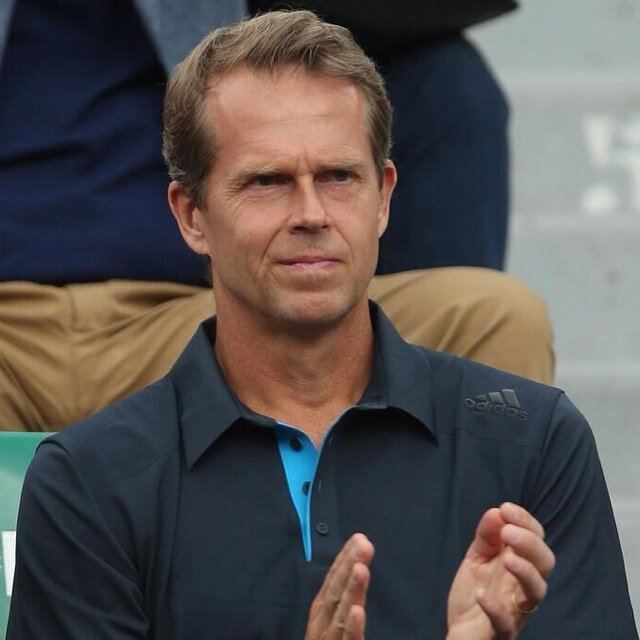 | ||
Born 19 January 1966 (age 59) Vastervik, Sweden ( 1966-01-19 ) Spouse Annette Hjort Olsen (m. 1992) Parents Barbro Edberg, Bengt Edberg Similar People | ||
Stefan Edberg Tennis Series 20
Stefan Bengt Edberg ([ˈsteːfan ˈeːdˌbærj]; born 19 January 1966) is a Swedish former world no. 1 professional tennis player (in both singles and doubles). A major proponent of the serve-and-volley style of tennis, he won six Grand Slam singles titles and three Grand Slam men's doubles titles between 1985 and 1996. He also won the Masters Grand Prix and was a part of the Swedish Davis Cup-winning-team four times. In addition he won four Masters Series titles, four Championship Series titles and the unofficial Olympic tournament 1984, was ranked in the singles top 10 for ten successive years, 9 years in the top 5, and is considered one of the greatest players of his era. Edberg began coaching Roger Federer in January 2014, with this partnership ending in December 2015.
Contents
- Stefan Edberg Tennis Series 20
- Roger Federer vs Stefan Edberg Backhand GAME RECOGNISE GAME
- Career
- Style of play
- Equipment
- Post career competitive racquet sports
- Coaching
- Distinctions and honors
- Personal life
- Records
- Professional awards
- References
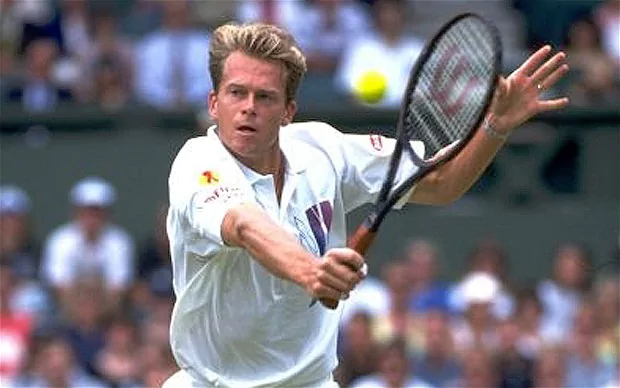
Roger Federer vs Stefan Edberg Backhand: GAME RECOGNISE GAME
Career
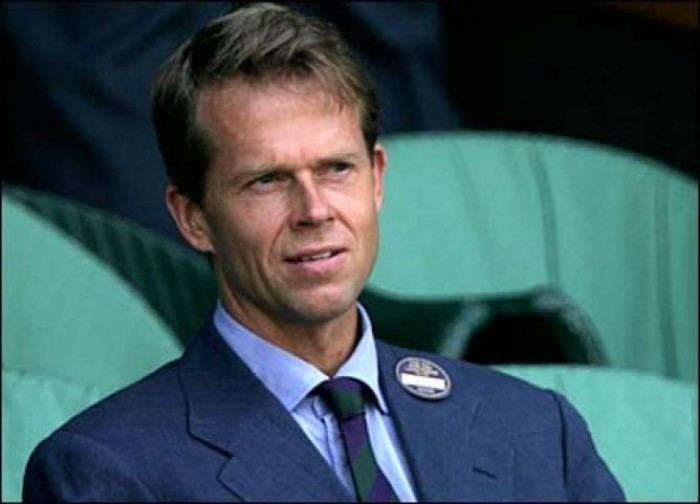
Edberg first came to the tennis world's attention as a junior player. He won all four Grand Slam junior titles in 1983 to become the first (and only) player to achieve the "Junior Grand Slam" in the open era. Later that year as a professional, Edberg won his first career doubles title in Basel. Edberg accidentally caused the death of linesman Dick Wertheim with an errant serve during the 1983 US Open.
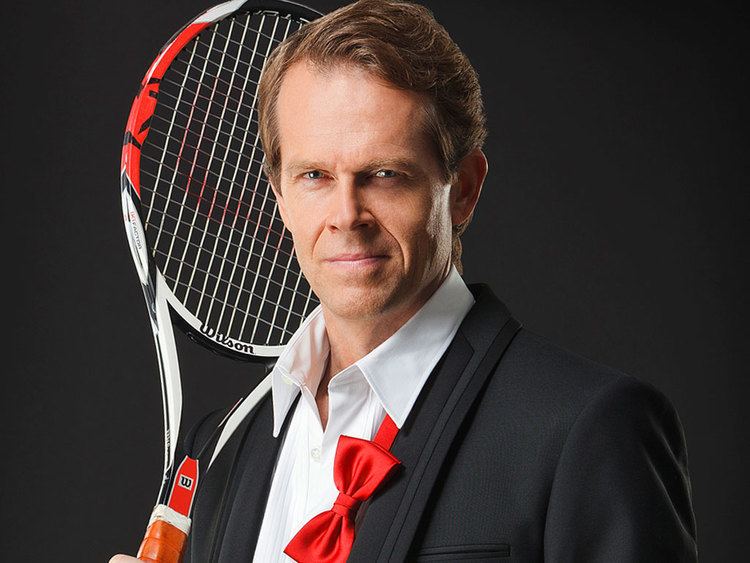
In 1984, Edberg won his first top-level singles title in Milan. Edberg also won the tennis tournament at the 1984 Summer Olympics when the sport was an exhibition event and partnered with fellow Swede Anders Järryd to reach the final of the US Open. Edberg also reached the French Open doubles final with Järryd in 1986 and consequently was World No. 1 in doubles in that year.
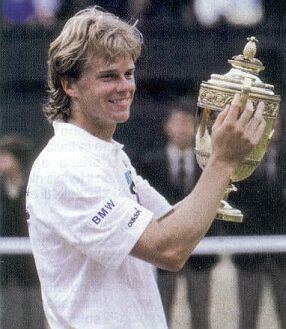
U.S. fans first took notice of Edberg's professional career when he won the U.S. Indoor in Memphis in February 1985, defeating Yannick Noah in the final. Edberg's first two Grand Slam singles titles came at the Australian Open. In December 1985, he defeated Mats Wilander in straight sets to claim his first major title. In January 1987, he defended his title by defeating local favourite Pat Cash in five sets to win the last Australian Open held on grass courts. Edberg also won the Australian Open and US Open men's doubles titles in 1987 (partnering fellow Swede Anders Järryd).
In 1988, Edberg reached the first of three consecutive finals at Wimbledon, but lost his ranking as Sweden's number one player when Mats Wilander had his best year by winning the Australian, French and US Opens in 1988, becoming the world's number one ranked player. In all three of his consecutive Wimbledon finals, he played German Boris Becker in what became one of Wimbledon's greatest rivalries. Edberg won their first encounter in a four-set match spread over two days because of rain delays. A year later, Becker won in straight sets. The closest of their matches came in the 1990 final, when Edberg won in five sets after being down a break in the fifth set.
Edberg reached the French Open final in 1989 but lost in five sets to 17-year-old Michael Chang, who became the youngest ever male winner of a Grand Slam singles title. This was the only Grand Slam singles title that Edberg never won, denying him the completion of a career Grand Slam at the senior level, to match his junior Grand Slam.
In 1990, an abdominal muscle injury forced Edberg to retire from the Australian Open final while trailing Ivan Lendl 5–2 (including two breaks of serve) in the third set. Edberg nevertheless took the World No. 1 ranking from Lendl on 13 August 1990 by winning the Super 9 tournament in Cincinnati. He held it for the rest of that year and for much of 1991 and 1992. Edberg spent a total of 72 weeks as World No. 1. In 1991 Edberg again reached the Semi Finals of Wimbledon but lost to Michael Stich in a close match: 4–6, 7–6, 7–6, 7–6.
Edberg's final two Grand Slam singles triumphs came at the US Open, with wins over Jim Courier in the 1991 final and Pete Sampras in the 1992 final, who was just months away from being ranked No. 1 in the world.
Edberg reached the Finals of Australian Open again in 1992 and 1993, losing both times to Jim Courier in 4 sets. He was one of the few players who reached the finals for Australian Open 5 times. The 1993 Australian Open final was Edberg's last Grand Slam singles final appearance.
In 1996, Edberg reached the finals of Queens club but lost the match to Boris Becker. He won his third and final Grand Slam doubles title at Australian Open with Petr Korda. He reached quarterfinals of his last US Open after defeating Richard Krajicek and Tim Henman, but lost the quarterfinals to Goran Ivanisevic.
Edberg was most comfortable playing tennis on fast-playing surfaces. Of his six Grand Slam singles titles, four were won on grass courts at the Australian Open (1985 and 1987) and Wimbledon (1988 and 1990) and two were won on hardcourts at the US Open (1991 and 1992).
In December 2013, Edberg began coaching Roger Federer.
Style of play
Edberg is noted as the finest serve-and-volley player of his era and arguably the greatest of all-time. Edberg did not possess a powerful dominating serve like Pete Sampras or Boris Becker, but his serve was still largely effective. Edberg often chose to use a less powerful serve, such as a kick or slice serve. The extra time from using a slower serve gave Edberg more time to get to the net, where he used his quick feet and athleticism to gain control of the point. Edberg also had an excellent volley and could easily redirect powerfully struck balls to the open court. He had sufficient groundstrokes, and his one-handed backhand was one of his marquee shots. Edberg's backhand was extremely effective and considered amongst the best of his era.
Equipment
Through his whole career, Edberg used Wilson Sporting Goods racquets and Adidas clothing and shoes.
Post-career competitive racquet sports
Edberg began playing competitive squash after his retirement from professional tennis and soon became an elite player in Sweden. When racketlon emerged as a growing sport in Scandinavia, Edberg's pro-level tennis ability and emerging squash prowess made him highly competitive, despite his relative inexperience in badminton and table tennis.
In September 2008, Stefan Edberg officially joined the Black Rock Tour of Champions, a tour for professional tennis players who have retired from the ATP Tour. Edberg won his first tournament in Paris held on clay, winning matches against clay court specialists Thomas Muster in the opening round and Sergi Bruguera in the finals.
In January 2012, Edberg played a one-set exhibition against Jo-Wilfried Tsonga in Doha, Qatar, and lost 7–5.
Coaching
Edberg signed a contract to become Roger Federer's coach at the end of 2013. Their collaboration officially started at the 2014 Australian Open. [1] Federer described Edberg's role as "more of a mentor than a coach"; nonetheless, his influence has been widely regarded as pivotal in the Swiss champion's eventual resurgence, especially in bringing effective and more frequent serve-and-volley and net charging to his game.
Distinctions and honors
Personal life
Edberg was born in Västervik, Sweden. He is married to Annette Hjort Olsen. They have two children, Emilie and Christopher. (Olsen was once romantically linked to Edberg's tennis rival Mats Wilander before her marriage to Edberg.)
Edberg is a supporter of English football team Leeds United and the Swedish ice hockey team Växjö Lakers.
